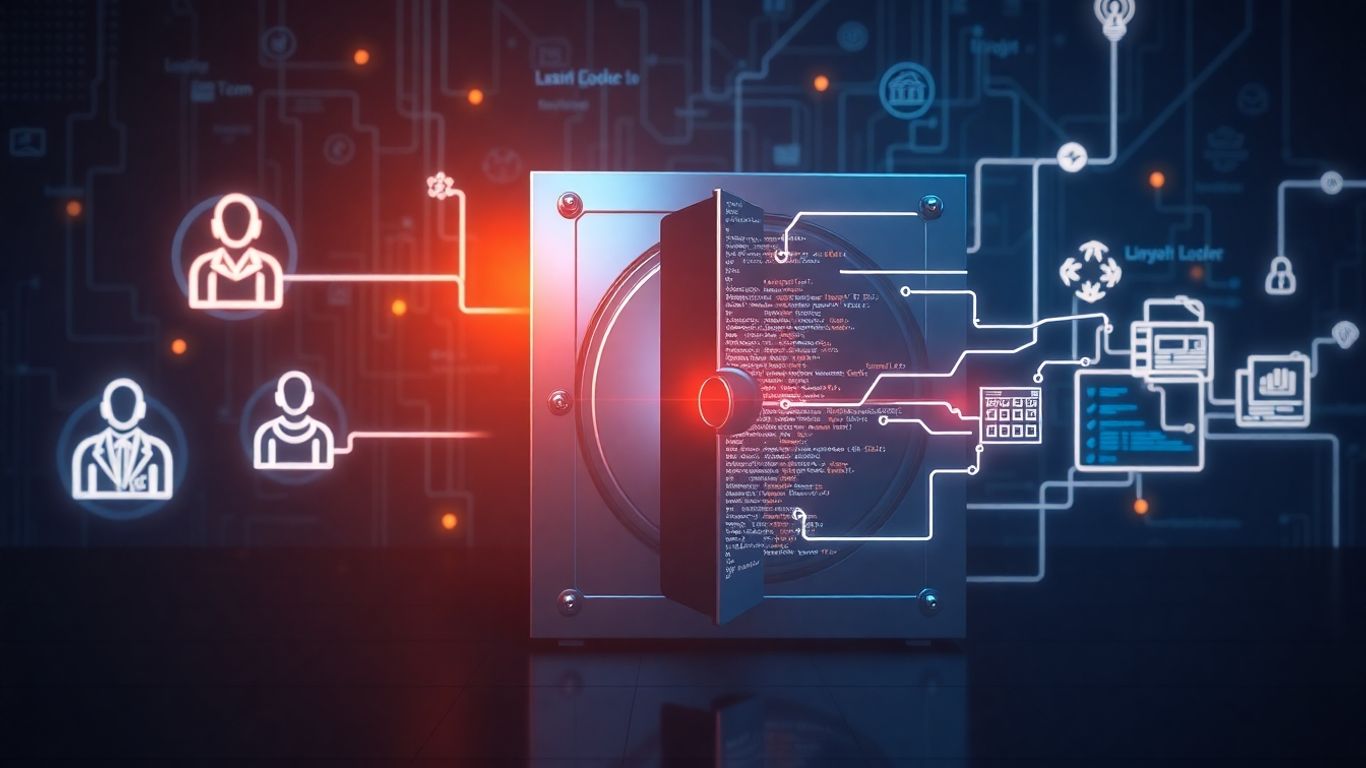[ newsletter ]
Stay ahead of Web3 threats—subscribe to our newsletter for the latest in blockchain security insights and updates.
Thank you! Your submission has been received!
Oops! Something went wrong. Please try again.
Stay ahead of market volatility with Mempool Risk Alerts. Get pre-trade warnings and insights into potential threats and trading opportunities.





Navigating the crypto world can feel like walking a tightrope sometimes. You've got amazing opportunities, but also some pretty shady characters and schemes lurking around. One area that's really starting to get attention is the mempool. It's basically where all the unconfirmed transactions hang out before they get added to the blockchain. By watching this space closely, we can get a heads-up on what might happen next in the market. This article is all about understanding mempool risk alerts and how they can help keep you safer.
Think of the mempool as the waiting room for crypto transactions. Before a transaction gets officially added to the blockchain, it hangs out in this pool, waiting for a miner to pick it up and include it in a block. It's a busy place, and by watching what's happening there, we can actually get a heads-up on potential problems or opportunities.
The mempool, short for memory pool, is a fundamental part of how blockchains work. It's where all the unconfirmed transactions go. When you send crypto, your transaction enters the mempool. Miners then select transactions from this pool, usually based on the fees offered, to create the next block. This process is key to how transactions get confirmed and added to the permanent ledger. Without the mempool, transactions would just disappear into the ether, never to be confirmed. It's the holding area that keeps everything moving along. Understanding this waiting room is the first step to seeing what's coming.
Watching the mempool isn't just about seeing transactions go through; it's about spotting unusual activity. For instance, a sudden surge of transactions trying to sell a specific token could signal that someone is about to dump a large amount, potentially crashing the price. Or, you might see a pattern of transactions that look like they're trying to manipulate prices. These aren't always obvious, but with the right tools, you can start to see these patterns emerge. It's like looking for smoke before you see the fire. The mempool acts as an early warning system for suspicious on-chain activity.
Instead of reacting after something bad happens, mempool risk alerts let you get ahead of the game. By setting up systems that constantly monitor the mempool for specific red flags, you can get notified before a potential scam or exploit fully plays out. This could mean getting an alert about a potential rug pull on a new token or spotting a large, unusual transaction that might be part of a money laundering scheme. It's about using the data available to protect yourself and your investments. Think of it as having a security guard watching the entrance to your building, letting you know if someone suspicious is hanging around.
Here's a quick look at what kind of threats can be flagged:
The mempool is a dynamic space, constantly filled with pending transactions. Analyzing this stream of data in real-time allows for the identification of potential market shifts and security risks before they are finalized on the blockchain. This proactive approach is vital in the fast-paced world of digital assets.

Looking at the mempool can really show you what's going on under the hood in the crypto world. It's not just about seeing pending transactions; it's about spotting the bad actors and the tricky plays before they mess things up for everyone else. Think of it like having a crystal ball, but for blockchain transactions.
Rug pulls are a nasty surprise, especially in the meme coin scene. Basically, the project creators dump their tokens after hyping them up, leaving everyone else holding worthless bags. Insider schemes are similar, where those in the know cash out big before a project tanks. Mempool analysis can flag these by showing a sudden flood of sell orders from a few specific wallets, often right before a price crash. It’s like seeing a bunch of people suddenly trying to exit a burning building all at once.
The mempool acts as an early warning system. By observing the behavior of large holders and project insiders, we can often detect the tell-tale signs of a planned exit scam before it fully unfolds, giving us a chance to react.
On the flip side, the mempool can also reveal opportunities. When the same token is trading at different prices on different decentralized exchanges (DEXs), savvy traders can exploit these differences for a quick profit. Mempool data can show these price discrepancies in pending transactions, allowing traders to get in and out before the market corrects itself. It also helps in spotting more complex exploits, like those involving flash loans, where attackers manipulate prices rapidly. You might see a flurry of transactions trying to borrow and repay massive amounts in a very short time, often with a specific goal in mind.
Sandwich attacks are a bit sneaky. A trader places a buy order, then waits for other pending transactions (like yours) to get included in a block, pushing the price up. Then, they immediately sell their tokens at the higher price, profiting from the price movement they manipulated. Mempool analysis can help identify these by showing a buy order followed closely by a series of other transactions, and then a sell order from the same initial trader. It’s like watching someone set a trap and then spring it.
By keeping an eye on these patterns in the mempool, traders can either avoid becoming victims of these attacks or even potentially profit from them by front-running the attacker themselves. It’s a constant game of cat and mouse, and mempool data gives you a better view of the playing field.

The mempool, that waiting room for unconfirmed transactions, is a goldmine for traders who know how to look. It's not just about seeing what's coming; it's about understanding the market's pulse before it even hits the main blockchain. By digging into this data, you can get a real edge.
Think of transaction volume in the mempool as a leading indicator. A sudden surge in pending buy orders for a token, especially if they're larger than usual, could signal upcoming demand and a potential price increase. Conversely, a flood of sell orders might point to downward pressure. It's like seeing a crowd gather before a big event – you know something's about to happen.
Here's a simple way to look at it:
Watching these patterns can give you a heads-up on market shifts before they're obvious on the charts.
Real-time mempool analysis is where the magic really happens. You're not looking at historical data; you're seeing what's happening right now. This is especially useful for spotting opportunities that disappear in seconds. For instance, if you see a large transaction about to go through that will significantly impact a token's liquidity, you might be able to position yourself to profit from the resulting price movement.
The speed of the crypto market means that waiting for confirmation can mean missing out. Mempool data offers a glimpse into the immediate future, allowing for quicker decisions.
Beyond just volume, experienced traders look for specific patterns. This could involve tracking large holders (whales) and their pending transactions, as their moves often dictate market direction. Another technique is identifying arbitrage opportunities – small price differences between exchanges that are about to be exploited by pending transactions. You can also look for recurring patterns, like a specific contract that always sees a spike in activity on certain days, which might correlate with predictable price changes.
For example, imagine you notice:
This kind of detailed analysis requires tools that can process and present mempool data effectively, turning raw information into actionable trading signals.
So, you've heard about mempool risk alerts and how they can give you a heads-up on potential trouble or opportunities. That's great! But how do you actually put this into practice? It's not as complicated as it might sound, and there are some solid tools and methods to get you started.
First off, you need a way to actually see what's happening in the mempool. Think of it like needing a weather station to get storm alerts. There are several platforms out there that can help you tap into this data. Some offer fancy dashboards, while others give you raw data you can work with.
The key is finding a tool that fits your technical comfort level and your trading style.
Just looking at data isn't enough; you need to be notified when something important pops up. This is where setting up alerts comes in. You don't want to be glued to a screen 24/7, right?
Setting up effective alerts is a balancing act. You want to be informed without being constantly bombarded. Start with broader alerts and then narrow them down as you get a better feel for what's truly important in your trading context.
Finally, how do you actually use this information to make better trading decisions? It's about weaving these mempool insights into your existing strategy.
By combining mempool monitoring with your trading strategy, you're essentially adding an extra layer of intelligence, helping you react faster and potentially avoid costly mistakes.
Decentralized Finance, or DeFi, has really opened up a lot of new ways to handle money without needing traditional banks. Think lending, staking, and trading across different blockchains, all without needing to show your ID. This is great for privacy, but it also means bad actors can use these features to hide where their money comes from. They can move funds around super fast through many different wallets and across various blockchains, making it a real headache to track. It's like a digital maze designed to lose pursuers. A lot of money has been lost because of these exploits, sometimes billions of dollars, hitting users and investors hard. Even with security tools out there, new ways to attack pop up all the time, often because of how things are put together or just a lack of solid security from the start.
Because crypto can be sent anywhere in the world instantly, it can slip through the cracks of different countries' rules. Some places have strict rules about stopping money laundering, while others are much more relaxed. Criminals are really good at finding these weak spots, moving money from places with tough rules to places with easy ones. This makes it much harder for law enforcement to catch them. They use techniques like 'chain-hopping' between different blockchains or using 'mixers' that shuffle funds around to make them untraceable. It's a constant game of cat and mouse, with criminals always looking for the next loophole.
Beyond the usual scams, new threats keep appearing. Ransomware attacks, where criminals demand payment in crypto, are becoming more common. They often ask for payment in privacy-focused coins like Monero, which are designed to be hard to trace. Darknet markets, places where illegal goods are sold, also rely heavily on crypto. These markets often use mixers and peer-to-peer trades to hide the origin of funds. There are even services specifically designed to make crypto transactions harder to follow, like advanced tumblers or privacy-enhancing technologies. These methods are constantly getting more sophisticated, making it a real challenge to keep financial systems clean.
The speed at which new threats emerge in the blockchain space is astounding. What was a novel attack vector a year ago might be commonplace today, with attackers refining their techniques and tools at an alarming rate. This rapid evolution means that staying ahead requires constant vigilance and a willingness to adapt security measures just as quickly.
Keeping financial systems honest and secure is a big deal, especially with all the new tech popping up. Blockchain and decentralized finance (DeFi) bring some cool stuff, but they also open doors for folks trying to game the system. We're talking about making sure everyone plays fair and that money laundering or outright theft doesn't become the norm. It's about building trust and making sure this whole digital asset space is safe for everyone, not just the tech wizards.
This is where we really dig into who's doing what. It's not enough to just check a name; we need to look deeper. For new clients, especially those dealing with large sums or coming from high-risk areas, we need to go beyond the basics. Think about where their money is coming from, who really owns what, and what their past transactions look like. This helps catch any hidden connections to shady dealings or attempts to move dirty money across borders.
The goal here is to build a clear picture of legitimacy, making sure that onboarding decisions are well-informed and can stand up to scrutiny.
Blockchains are like public ledgers, but they can get pretty complicated. That's where blockchain analytics tools come in. These platforms use smart tech, sometimes AI, to sift through all that on-chain data. They can spot weird transaction patterns that might signal money laundering, like funds bouncing between tons of different wallets or using mixing services to hide where the money came from. It's about turning raw data into actual, actionable intelligence.
No single company or agency can catch everything. The bad actors are organized, and so do we need to be. Sharing information between different financial institutions, regulators, and law enforcement is key. When one group spots a new trick or a suspicious pattern, letting others know helps everyone stay ahead of the curve. This collective effort creates a much stronger defense against financial crime in the digital asset space.
So, we've talked about how looking at what's waiting in the mempool can give you a heads-up on what might happen next in the crypto market. It's not a crystal ball, for sure, but it's like getting a little peek behind the curtain before a big show. By watching these pending transactions, you can spot trends, maybe find some quick trading chances, or even get an early warning about sketchy stuff like rug pulls. Tools that help you see this stuff in real-time are pretty handy. It’s all about using the data that’s already there to make smarter moves and hopefully avoid some of the common pitfalls out there.
Think of the mempool as a waiting room for crypto transactions. When someone sends crypto, it doesn't go through instantly. It waits in the mempool until a miner picks it up to add it to the blockchain. For traders, watching this waiting room is like getting a sneak peek at what's about to happen. It can show if lots of people are trying to buy or sell something, which might mean the price is about to change.
A rug pull is when the creators of a crypto project suddenly sell off all their valuable tokens, leaving others with worthless ones. Mempool alerts can help by showing unusual activity, like a large amount of a new token being moved by the project's creators. This early warning lets traders try to sell their tokens before the price crashes.
Sandwich trading is a tricky move where someone sees a big buy or sell order waiting in the mempool. They quickly place their own buy order just before it, and then a sell order just after. This pushes the price a bit for the big order, and they profit from the difference. Watching the mempool helps these traders spot those big orders to try and make a quick profit.
Mempool data gives clues, not guarantees. If you see tons of buy orders waiting, it suggests people are eager to buy, which might push prices up. Conversely, many sell orders could mean prices might drop. It's like seeing a crowd gather – you might guess something interesting is about to happen, but you can't be 100% sure.
Yes, there are tools and platforms designed to watch the mempool. Some specialized services offer real-time data feeds and alerts. These can help traders keep an eye on the waiting room for transactions without having to constantly check themselves.
While big traders might have more resources to act on mempool insights, the information itself can be useful for anyone. Even smaller traders can use alerts to understand general market sentiment or get warnings about potential scams, helping them make smarter decisions.


